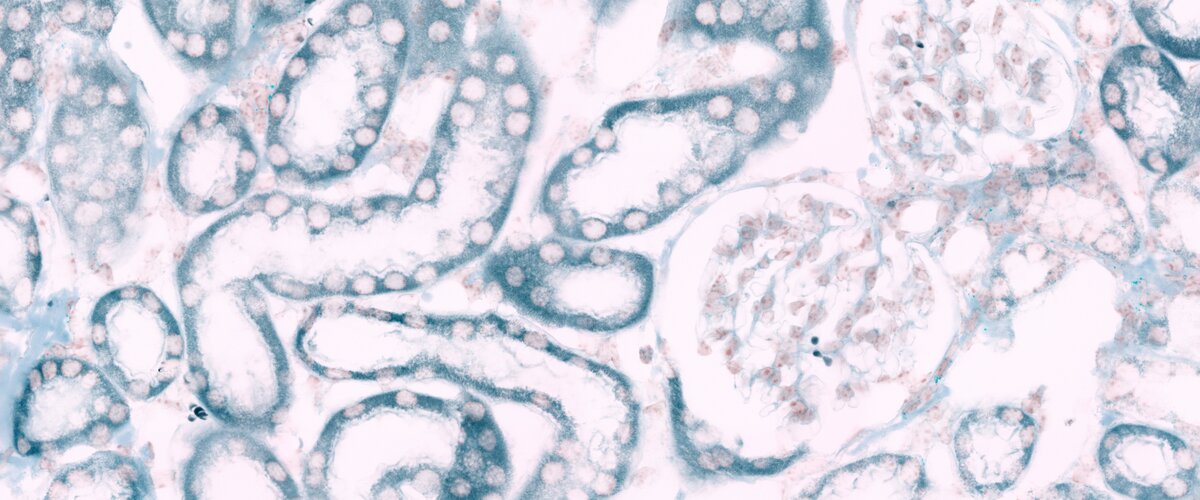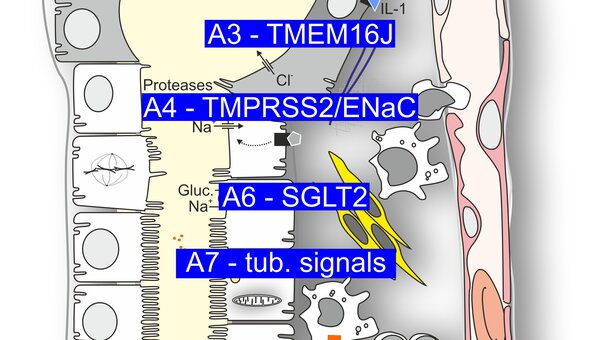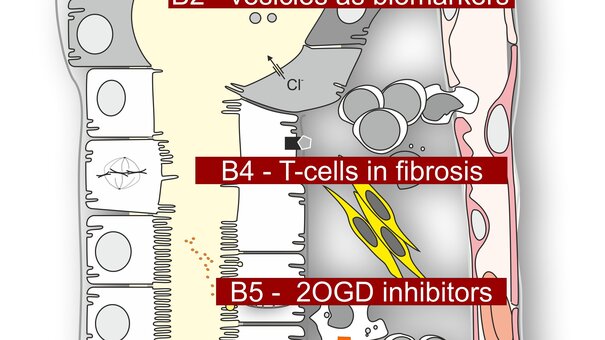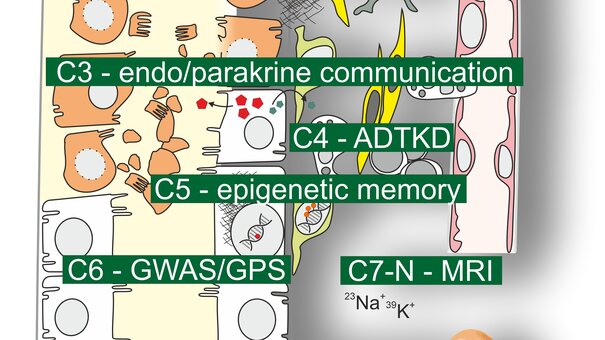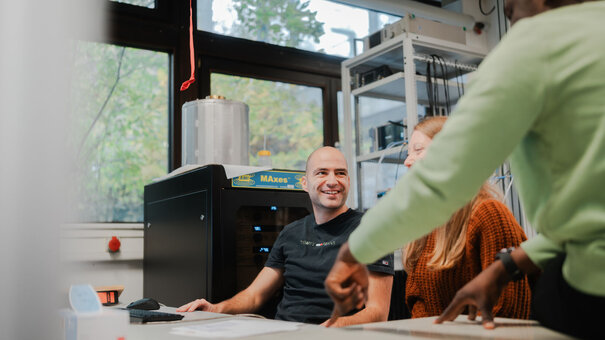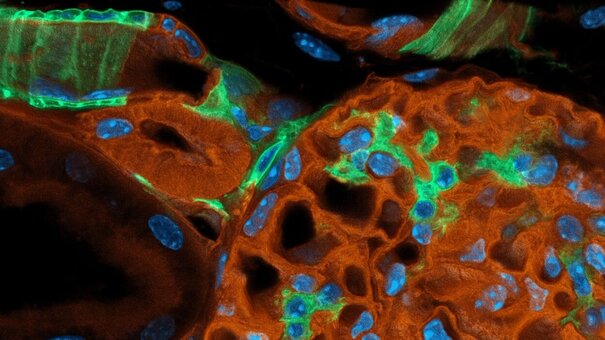In its first funding period, the CRC 1350 investigated the diverse functions and interactions of tubular epithelia and interstitial cells. We have gained important insights into pathomechanisms in several monogenic diseases, identified genetic risk factors for multifactorial kidney diseases, investigated the function and dysfunction of interstitial cells, interstitial inflammation and fibrosis, and explored damage memory and the consequences of hypoxia. A team of researchers has discovered the importance of TMEM16A (Ano1) chloride channels for cyst growth, confirmed the mechanism in animal models, demonstrated the efficacy of inhibitors of these channels and finally established an ex vivo model to test the effects in human cystic kidney tissue and develop strategies for the treatment of patients with polycystic kidneys.
In the current, second funding period, the overarching goal is to further deepen our knowledge of the (patho)physiology of the tubular system and renal interstitium, with a focus on the development of new diagnostic and therapeutic strategies.
In order to achieve this ambitious goal, we will incorporate further signalling pathways, new state-of-the-art methods, innovative models and analysis strategies into our research concept. The further development of the Collaborative Research Centre 1350 into Transregio 374 RENPRO was an important prerequisite for this. The research team will be further strengthened by the integration of outstanding (clinical) scientists, translational research projects and advanced data analysis.

